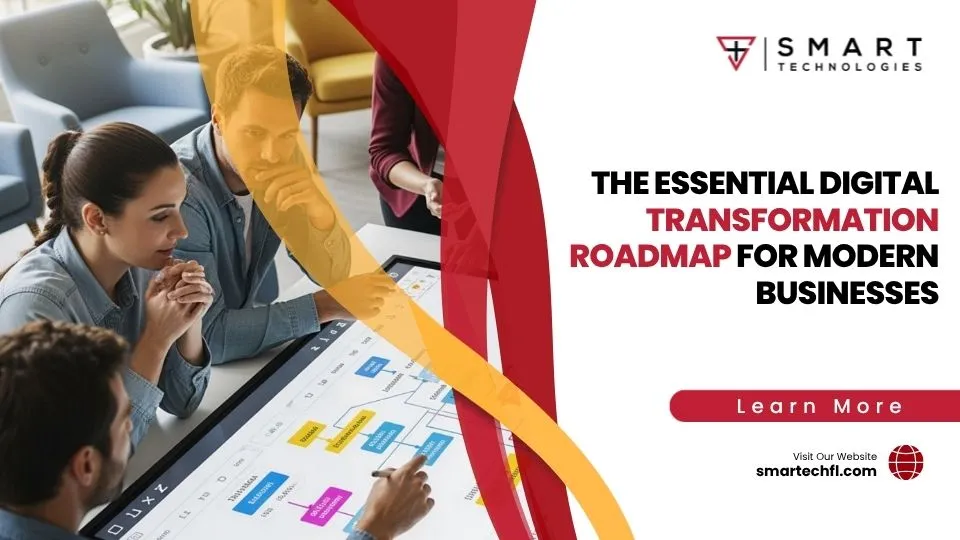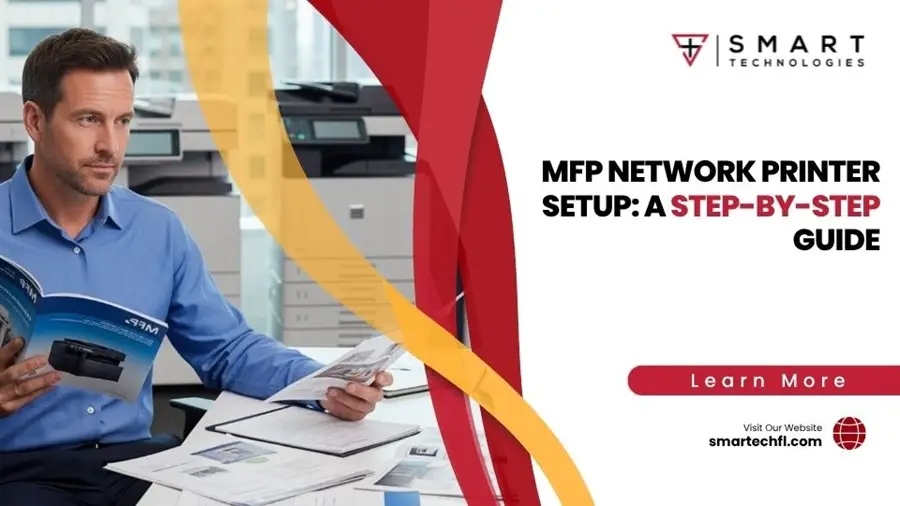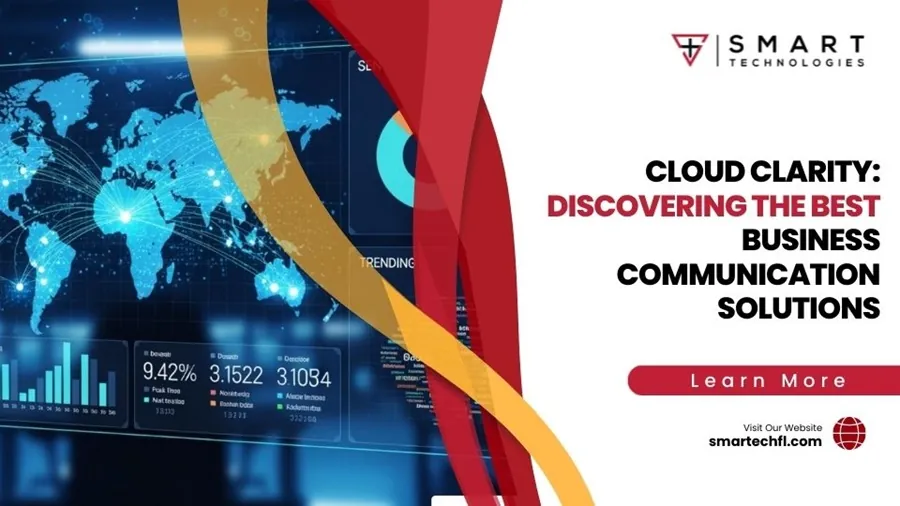CPaaS Providers: Who’s Leading the Pack in 2025?
Here are the top CPaaS providers leading the market in 2025:
- Twilio – Leader in developer-focused APIs with extensive documentation and global reach
- Infobip – Strong in omnichannel messaging with 800+ direct operator connections globally
- Vonage (Ericsson) – Robust UCaaS-CCaaS-CPaaS integration with enterprise focus
- Sinch – Powers conversations for 150,000+ businesses with NLP support in 100+ languages
- Microsoft Azure Communication Services – Deep Microsoft ecosystem integration
- Bandwidth – Strong voice/messaging coverage across 60 countries with BYOC model
- Tata Communications – Exceptional emerging markets coverage with network API focus
CPaaS providers (Communications Platform as a Service) have revolutionized how businesses connect with customers across multiple channels. In 2024-2025, this market is experiencing explosive growth, projected to surge from $12.3 billion to an astonishing $121 billion by 2034.
For business owners looking to modernize operations, CPaaS offers a game-changing approach to customer communications. Instead of managing separate systems for voice, text, email, and chat, these cloud platforms provide unified APIs that let you embed real-time communication features directly into your existing applications and workflows.
“Every opportunity to engage a customer matters—choose your partner wisely,” notes one industry expert. This sentiment rings especially true as businesses face increasing pressure to deliver seamless omnichannel experiences that meet customers where they are.
What makes today’s CPaaS landscape different is the shift from basic communication APIs to comprehensive platforms that include AI-powered automation, low-code integration tools, and direct carrier connections. The right provider can help you transform customer interactions while reducing costs and technical complexity.
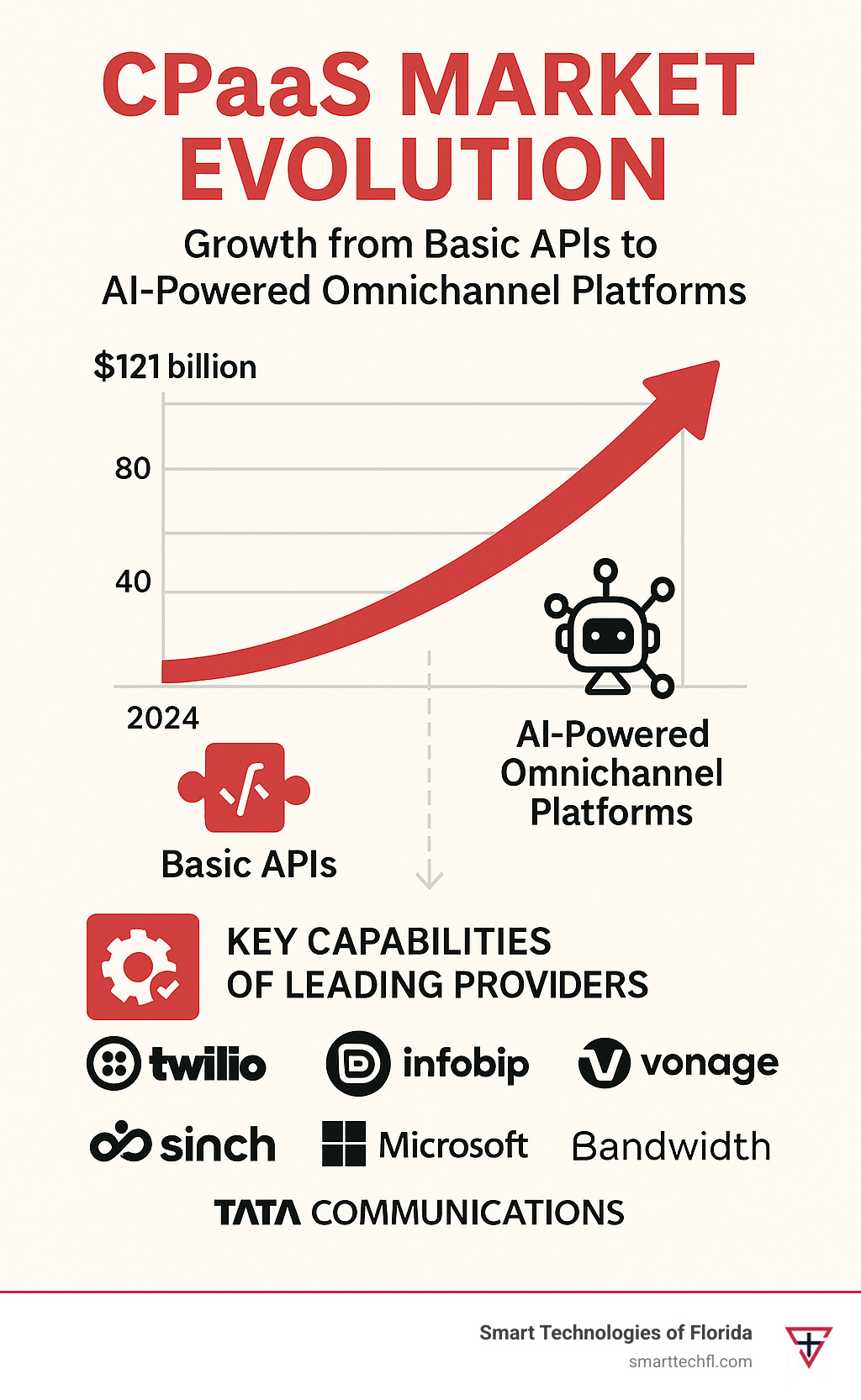
Why Compare CPaaS Solutions in 2025?
The urgency to evaluate CPaaS providers has never been greater. With global consumers now demanding two-way omnichannel conversations via messaging, email, voice, and apps, businesses are scrambling to meet these expectations. At Smart Technologies of Florida, we’ve seen how this shift is affecting businesses across industries.
The stakes are high: By 2026, Gartner projects that 90% of global enterprises will leverage CPaaS as a strategic IT skill set to maintain digital competency, up dramatically from just 30% in 2022. This rapid adoption is driven by three key factors:
- Omnichannel demand: Customers expect seamless experiences whether they’re texting, calling, or using a messaging app
- Developer speed: CPaaS dramatically accelerates time-to-market for new communication features
- AI automation: Leading platforms now offer AI-powered tools that can handle routine interactions automatically
“In 2024, the concept of digital change might sound like a thing of the past, but the truth is, it’s a never-ending process of learning and adjusting digital resources to shifting customer expectations,” explains one industry analyst. CPaaS has become central to this ongoing evolution.
What Is CPaaS & How Does It Work?
CPaaS (Communications Platform as a Service) is a cloud-based platform that provides developers and business users with APIs, SDKs, and visual builders to integrate communications capabilities like voice, SMS, email, messaging apps, video, and conversational features into their applications and workflows.
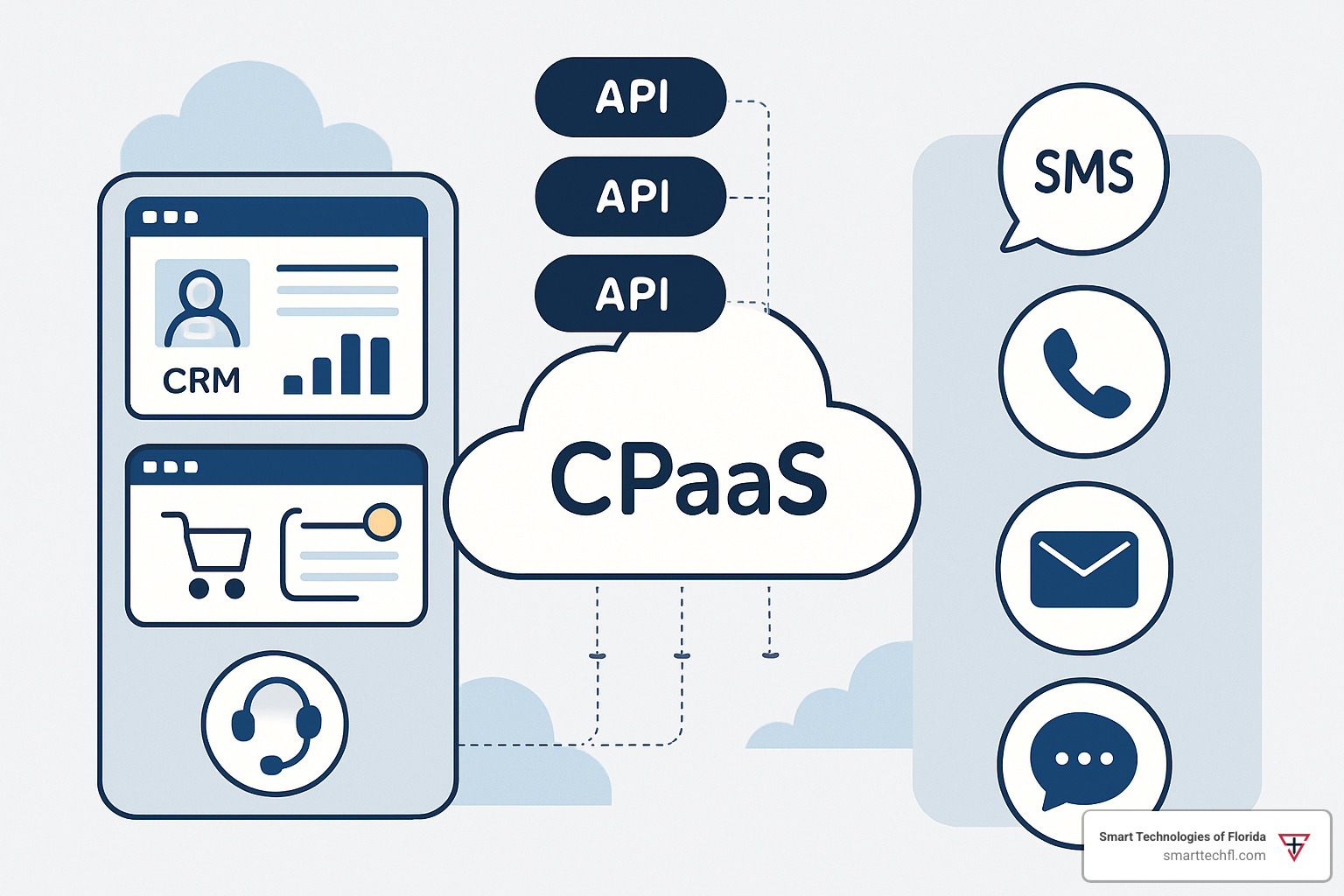
Think of CPaaS as the invisible magic that powers modern business communications. At its heart, CPaaS works through cloud-based APIs (Application Programming Interfaces) that act as friendly bridges between your applications and communication networks. These APIs handle all the complicated backend infrastructure, freeing you to focus on creating exceptional customer experiences.
A retail business owner I spoke with recently put it perfectly: “CPaaS changed everything for us. Now we can send appointment reminders by text, jump on video calls from our CRM, add call buttons to product pages, secure accounts with two-factor authentication, and even use chatbots for common questions—all from one platform!”
What makes CPaaS so appealing is its flexibility and wallet-friendly pricing. Rather than investing in expensive hardware or getting locked into long contracts, you can simply pick the communication features you need and pay only for what you use. It’s like having a communication buffet where you only pay for the dishes you actually eat!
As one of our clients at Smart Technologies of Florida shared, “Sometimes customers want a phone call, sometimes a quick text works better. With CPaaS, we can meet them wherever they are, without maintaining separate systems for each channel.”
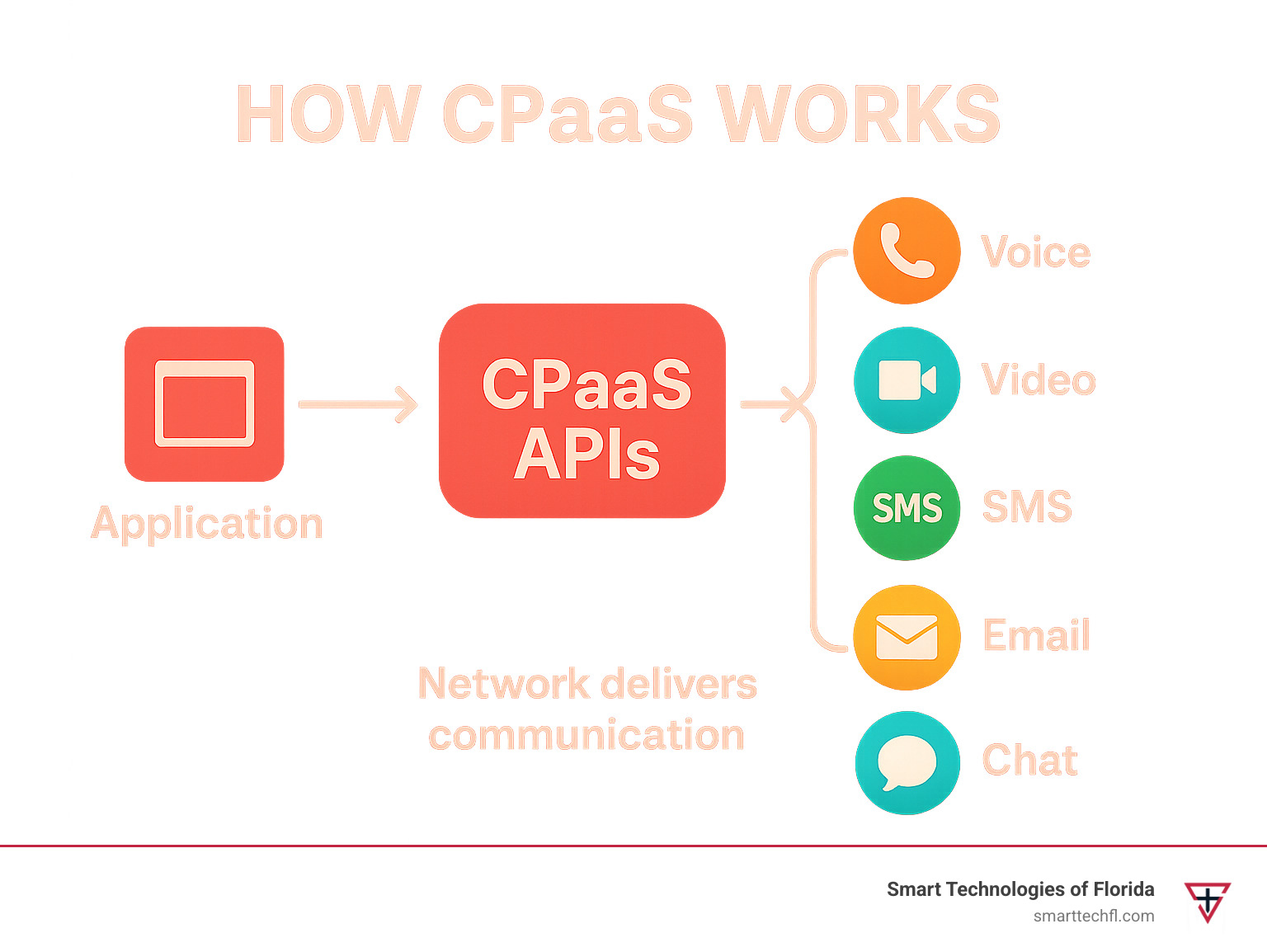
CPaaS vs UCaaS vs CCaaS
When exploring communication solutions, it’s helpful to understand how CPaaS providers differ from other options you might encounter:
| Solution | Primary Purpose | Delivery Model | Best For |
|---|---|---|---|
| CPaaS | Communication building blocks | APIs and SDKs | Custom communication experiences |
| UCaaS | Ready-to-use business communications | Complete applications | Internal team collaboration |
| CCaaS | Customer contact center operations | Agent workspaces | Customer service teams |
CPaaS gives you modular APIs to build custom communication experiences directly into your existing applications. It’s perfect when you want precise control over how communications work within your customer journey. It’s like getting the ingredients to cook exactly the meal you want.
UCaaS (Unified Communications as a Service) offers ready-to-use communication tools like video conferencing, team messaging, and phone systems. It’s ideal for internal team collaboration and comes as a complete package. Think of it as ordering a pre-made meal kit with everything included.
CCaaS (Contact Center as a Service) focuses specifically on customer service with features like call routing and agent dashboards. It’s designed for dedicated support teams. This is more like a specialized restaurant kitchen ready to serve customers.
The beautiful thing about CPaaS providers is they give you the freedom to build communication capabilities exactly how and where you need them, rather than adapting to pre-built solutions.
Core Building Blocks
Every solid CPaaS platform is built on several essential components that work together seamlessly:
REST APIs serve as standardized interfaces that make it easy for developers to integrate communication functions into any application. Working alongside them, webhooks notify your application when important events happen, like when a customer sends a message or hangs up a call.
Carrier network connections are perhaps the most underappreciated aspect of quality CPaaS solutions. These direct relationships with telecom providers ensure your messages actually reach their destination reliably. As one technical director told me, “What really separates one CPaaS provider from another isn’t what they do, it’s how they do it—especially their carrier relationships.”
Edge computing infrastructure keeps communications lightning-fast by processing data closer to users, while robust security and encryption protocols protect sensitive customer information from prying eyes.
These building blocks work together to create a foundation that’s both powerful and flexible, allowing businesses of any size to create communication experiences that were once only possible for large enterprises with massive IT budgets. At Smart Technologies of Florida, we’ve seen how the right CPaaS implementation can transform businesses by connecting them with customers exactly when and how it matters most.
Benefits & Trends Driving CPaaS Adoption in 2025
The world of business communication is changing rapidly, and CPaaS providers are at the heart of this change. At Smart Technologies of Florida, we’ve seen how these platforms are reshaping how our clients connect with their customers – creating more personal, responsive, and effective interactions.
When businesses implement CPaaS solutions, they quickly find several game-changing advantages. Agility tops the list – you can launch new communication channels in days rather than months, moving at what we like to call the “speed of now.” Scalability follows close behind, letting you handle surging message volumes during peak seasons without breaking a sweat.
One of our financial services clients recently shared their experience: “Before implementing CPaaS, we ran separate systems for everything—SMS alerts, email marketing, customer service calls. Now everything flows through one platform, which has cut our costs by 30% while making it easier to track customer journeys.”
That cost-efficiency is a major draw – you only pay for what you use, with no hefty upfront investments in hardware or infrastructure. For growing businesses, this pay-as-you-go model frees up capital for other priorities while still delivering enterprise-grade capabilities.
Perhaps most importantly, CPaaS delivers true omnichannel readiness, ensuring your customers enjoy consistent experiences whether they’re texting, calling, emailing, or using a messaging app. And with built-in security and compliance features, you can protect sensitive customer information without building complex security systems yourself.
Looking ahead to 2025, several exciting trends are accelerating CPaaS adoption:
AI-driven automation is revolutionizing customer service, with advanced chatbots and virtual agents handling routine inquiries 24/7. As Gartner notes, “By 2025, 80% of customer service interactions will leverage AI in some capacity.” This frees your human agents to focus on complex issues that truly need a personal touch.
Network APIs are creating deeper integration with carrier capabilities through initiatives like GSMA Open Gateway, open uping new possibilities for location-based services and network-aware applications.
The arrival of Rich Communication Services (RCS) on iOS 18 marks another game-changer, finally bringing improved messaging experiences to iPhone users. This means businesses can deliver rich media, read receipts, and interactive elements through standard messaging – no separate app required.
We’re also seeing improved interoperability between CPaaS platforms and other business systems like CRM and analytics tools, creating seamless digital experiences. And the rise of industry-specific templates for healthcare, finance, and retail is making implementation faster than ever.
For a deeper dive into how these benefits can transform your specific business operations, check out our comprehensive guide on CPaaS benefits for business communication.
Market Growth Snapshot
The numbers tell a compelling story – CPaaS providers are experiencing explosive growth with no signs of slowing down. Juniper Research projects the market will reach $29 billion by 2025, while longer-term forecasts suggest an even more dramatic expansion to $121 billion by 2034.
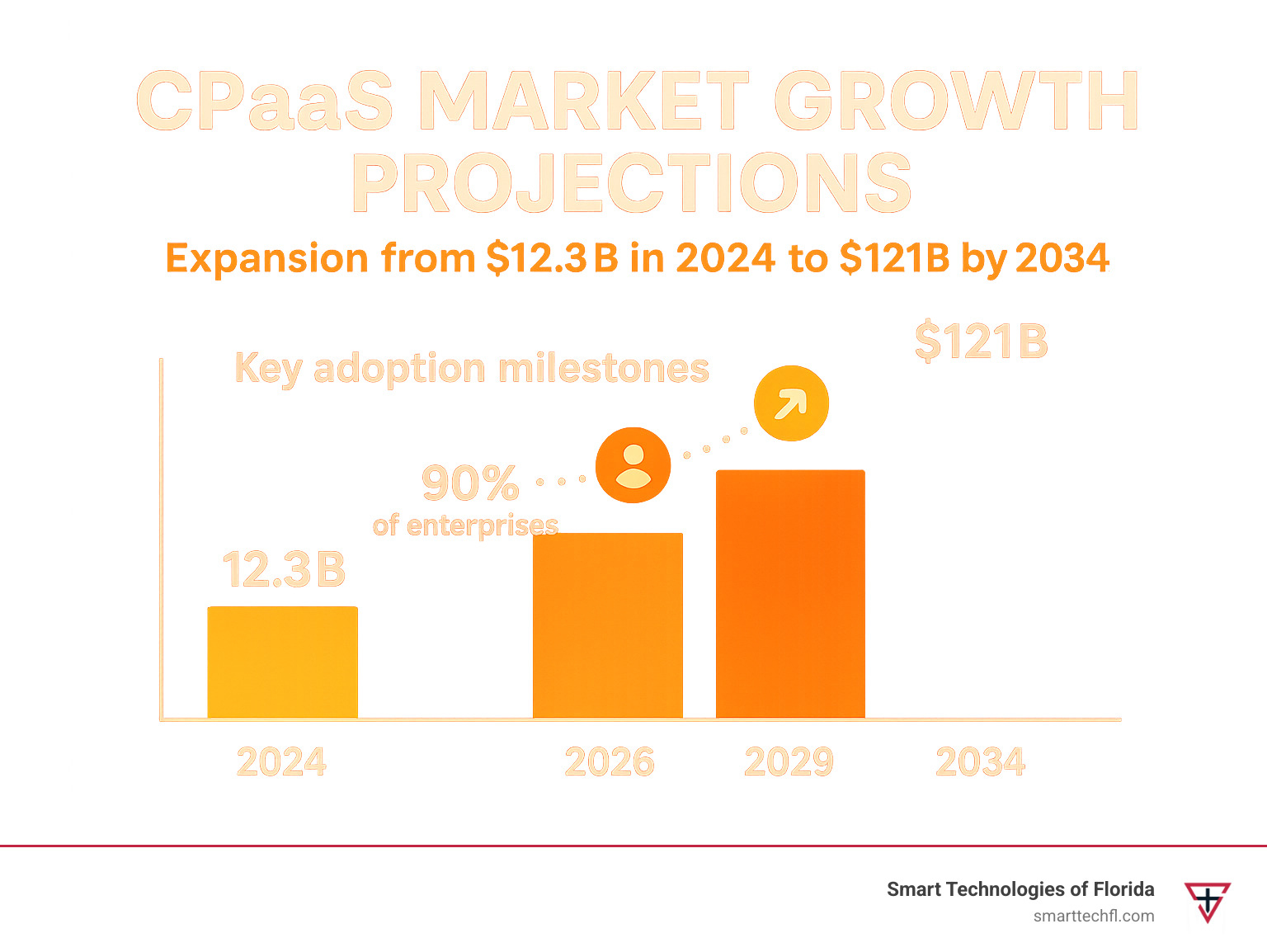
Industry analysts at 451 Research expect consistent growth at a 15% CAGR through 2028, fueled by both traditional enterprise adoption and exciting new B2C use cases. Perhaps most telling is Gartner’s prediction that by 2026, 90% of global enterprises will consider CPaaS a strategic IT skill set – a dramatic jump from just 30% in 2022.
This remarkable growth trajectory began accelerating during the pandemic, when businesses urgently needed to digitize customer communications. Market expansion spiked nearly 50% during 2020-2021, and the momentum hasn’t slowed.
“The B2C market represents a major untapped opportunity for CPaaS providers,” notes one industry analyst we work with. “As businesses seek to engage consumers through their preferred channels, CPaaS offers the flexibility and scalability needed to deliver personalized experiences at scale.”
For businesses considering their communication strategy, the message is clear – CPaaS is becoming the standard approach for forward-thinking organizations that want to meet customers where they are. For the latest market research and projections, you can explore Juniper Research market data.
CPaaS Solutions: Feature Comparison Matrix
When you’re shopping for CPaaS providers, comparing their features can feel overwhelming. Let me break it down for you in a way that makes sense, based on what we’ve learned implementing these solutions for our clients at Smart Technologies of Florida.
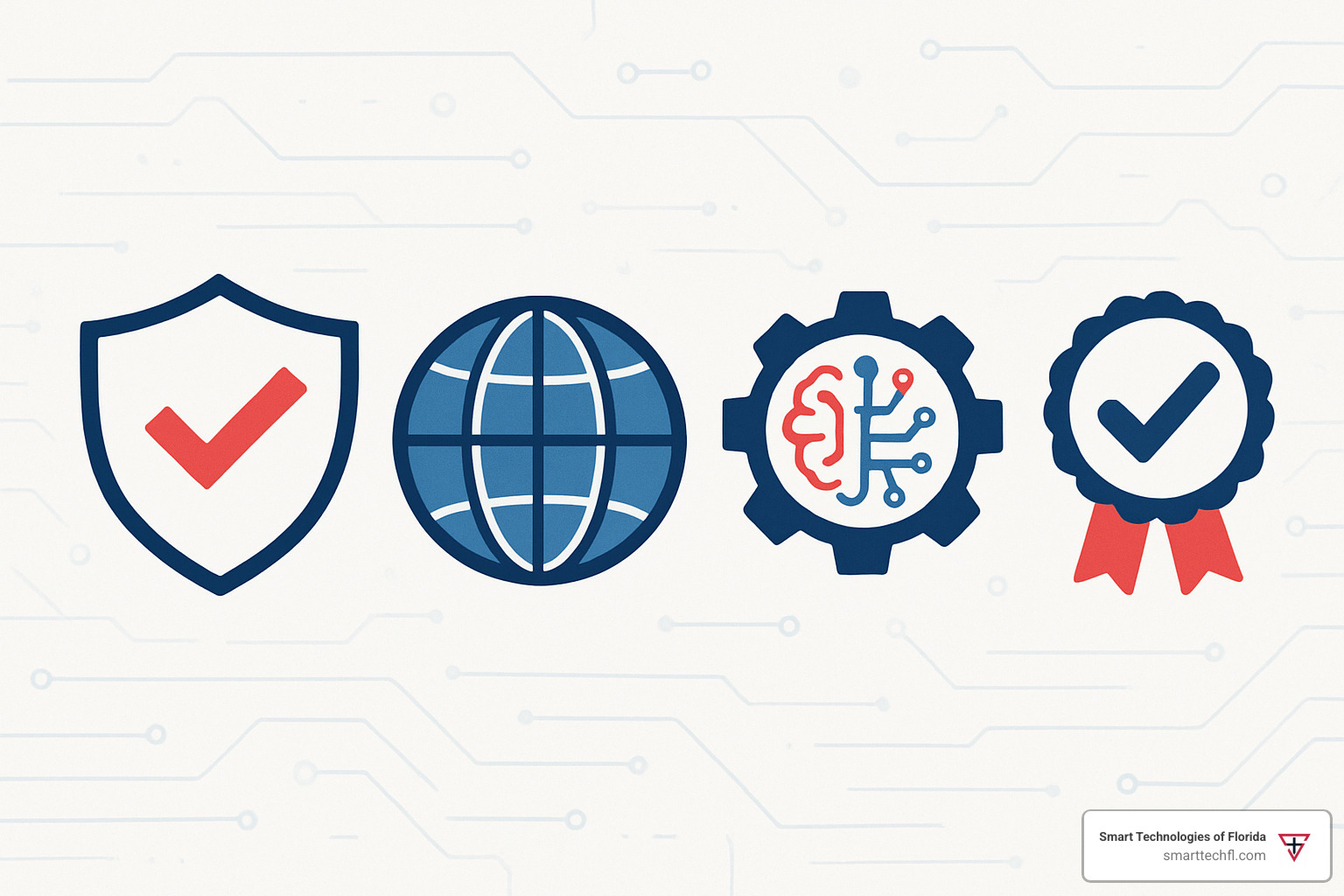
Think of this comparison table as your shopping guide to the CPaaS marketplace:
| Feature | Twilio | Infobip | Vonage | Sinch | Microsoft ACS | Bandwidth |
|---|---|---|---|---|---|---|
| Message Volume | 157B+ annually | 800+ direct operator connections | High-volume A2P | 150K+ businesses served | Azure scale | High-volume SMS focus |
| Channel Coverage | Voice, SMS, Email, WhatsApp, Video | SMS, MMS, RCS, WhatsApp, Viber, Voice | Voice, SMS, Video, Social | Voice, SMS, Email, RCS, Chat Apps | Teams integration, Voice, Video, Chat | Voice, SMS, MMS, Toll-Free |
| SLA Uptime | 99.95% | 99.9% | 99.99% | 99.95% | 99.9% | 99.999% |
| Low-Code Tools | Studio visual builder | Flow Builder | Conversation API | Flow Builder | Low-code integration | Dashboard Builder |
| AI Capabilities | Conversational AI | Answers & Moments | AI Studio | NLP in 100+ languages | Azure AI integration | AI Insights |
| Global Reach | 180+ countries | Global super network | Global coverage | Global reach | Azure regions | 60 countries |
| Security Certifications | ISO 27001, SOC 2 | ISO 27001, GDPR | ISO 27001, HIPAA | ISO 27001, GDPR | Azure compliance | HIPAA, SOC 2 |
The numbers tell quite a story. Did you know that Twilio processes over 157 billion messages and 34 billion voice calls each year? That’s more communications than some small countries handle! Meanwhile, Infobip has built what they call a “super network” with more than 800 direct connections to mobile operators worldwide, giving them incredible reach.
Each provider brings something special to the table. I’m always impressed by Sinch’s language capabilitieshey can understand natural language in over 100 languages, which is a game-changer for global businesses. Bandwidth stands out with their 99.999% uptime guarantee (that’s less than 6 minutes of downtime per year!), while Microsoft’s offering shines if you’re already invested in their ecosystem.
How Leading CPaaS Solutions Stand Out
The best CPaaS providers don’t just offer APIsthey deliver complete communication ecosystems. Here’s what makes the leaders special:
The top providers offer incredible scalability that grows with your business. One of our retail clients started with just automated appointment reminders and now sends millions of personalized offers each month on the same platform, with zero growing pains.
Integrated communications is another standout feature. Rather than forcing you to juggle separate systems for voice, SMS, and messaging apps, modern CPaaS platforms let you create unified customer journeys across all channels. One API call can trigger the right message on the right channel at the right time.
Those direct operator connections might sound technical, but they make a huge difference in the real world. When you send a critical password reset or appointment reminder, you need it to arrive instantlynot sit in a queue somewhere.
The AI capabilities being built into these platforms are truly impressive. One healthcare client uses Sinch’s natural language processing to automatically categorize and route patient messages, saving their staff hours of manual sorting each day.
For enterprise customers, rock-solid security is non-negotiable. That’s why providers maintain certifications like ISO 27001 and SOC 2. As one banking customer told us, “The security documentation from our CPaaS provider actually helped us pass our own compliance audit.”
Developers also love the comprehensive resources like Sinch’s SDK starter kits that can cut weeks off implementation timelines. As one tech lead shared with me, “What impressed us most wasn’t just the APIs themselves, but the quality of documentation and support. We were able to implement our first messaging workflow in days rather than weeks.”
What Sets Top CPaaS Solutions Apart
Beyond the feature checkboxes, there are deeper qualities that separate the true leaders from the rest of the pack.
Infrastructure control makes a huge difference in reliability. The providers who own or directly control their infrastructure can deliver better performance with fewer outages. When issues do arise (and they always do eventually), these providers can resolve them faster because they’re not waiting on third parties.
A vibrant developer community is worth its weight in gold. The best platforms foster active forums, comprehensive documentation, and regular developer events. These communities become powerful innovation engines where developers share code, troubleshoot problems, and push the platform beyond its original design.
I’ve been particularly impressed with the trend toward vertical templates for specific industries. Rather than starting from scratch, businesses can now leverage pre-built solutions custom for sectors like banking, healthcare, and retaildramatically accelerating implementation.
Forward-thinking CPaaS providers are also investing heavily in network API roadmaps through initiatives like GSMA Open Gateway. These efforts will open up powerful new capabilities like network-verified location services and identity verification directly from the carriers.
As industry expert Raul Castanon wisely noted, “The simplicity of UI and broad device support is the true differentiator among CPaaS solutions.” In our experience at Smart Technologies of Florida, this focus on usability ensures that businesses can quickly leverage the full potential of these platforms without needing an army of specialized developers.
Choosing & Implementing the Right CPaaS Solution
Finding your perfect CPaaS provider match isn’t just about ticking boxes on a feature list. It’s about finding a communication partner that truly understands your business needs. At Smart Technologies of Florida, we’ve walked alongside many businesses on this journey, and we’ve learned a thing or two about making this important decision.
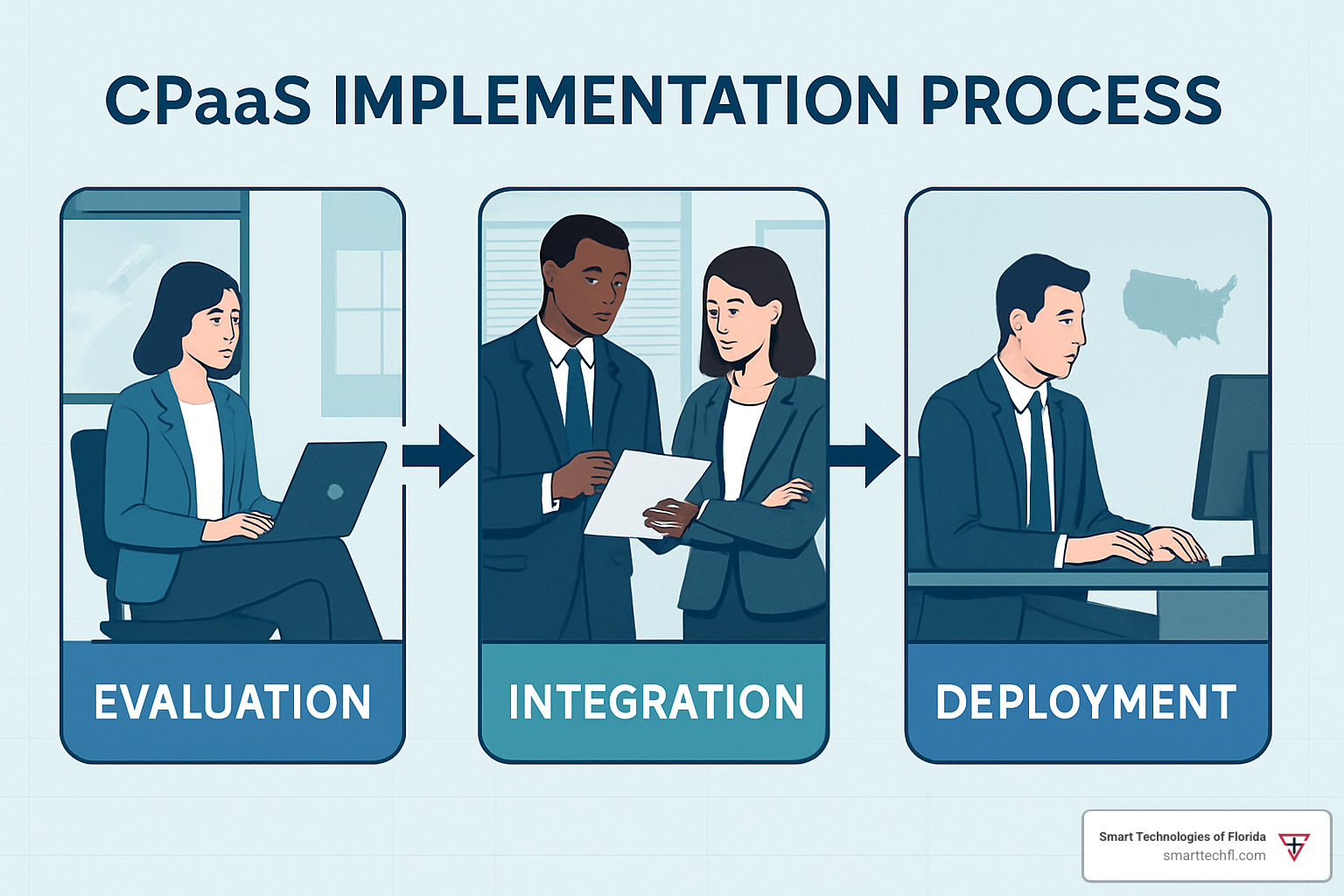
Think of choosing a CPaaS solution like finding the right home. You need to consider not just what you need today, but what you might need in the future. Will you need room to grow? How’s the neighborhood (or in this case, the support community)? What about security?
When evaluating providers, pay close attention to their API offerings, documentation quality, and carrier connections. The strength of their network infrastructure directly impacts how reliably your messages will reach customers. And don’t forget to look at how easily their platform will integrate with your existing systems sometimes what looks simple on paper becomes complicated in practice.
As one healthcare client told us with a smile, “We dipped our toes in with SMS appointment reminders first. When we saw no-shows drop by 40%, the decision to expand was a no-brainer!” They gradually added two-way messaging capabilities and eventually voice and video options for telehealth building confidence and proving value at each step.
For a deeper dive into selecting the right solution for your specific needs, check out our comprehensive guide on CPaaS solutions for business communication.
Key Questions to Ask About CPaaS Solutions
When you’re shopping around for CPaaS providers, asking the right questions can save you headaches down the road. Think about these three key areas:
First, consider your coverage needs. Where are your customers located? What channels do they prefer? A retail client of ours learned this lesson the hard way they built their entire strategy around SMS, only to find their international customers strongly preferred WhatsApp. Understanding geographic and channel preferences upfront makes all the difference.
Next, dig into the pricing model. Some providers charge based on usage, while others offer contact-based pricing. For instance, you might see entry-level plans priced around $100 per month that cover roughly 10,000 contacts (or about 100,000 messages). Ask yourself: Do you send occasional high-volume bursts of messages, or maintain steady communication with a fixed customer base? The answer will guide which pricing structure works best for you.
Finally, don’t underestimate the importance of support levels. As one financial services client shared with us, “When our verification service went down during peak hours, having a dedicated support contact was worth every penny. They had us back up within an hour.” When evaluating support options, look beyond the standard 9-to-5 coverage and ask about response times for critical issues.
Best Practices for Deploying CPaaS Solutions
After helping dozens of businesses implement CPaaS solutions, we’ve gathered some wisdom worth sharing:
Start small with a focused use case that solves a specific problem. This approach builds confidence and expertise within your team while delivering quick wins. Our implementation specialist puts it perfectly: “The most successful deployments identify high-impact, low-complexity use cases first like appointment reminders or delivery notifications.”
Monitor analytics religiously from day one. The data will tell you what’s working and what isn’t, guiding your optimization efforts. Pay special attention to delivery rates, engagement metrics, and business outcomes.
Iterate channels thoughtfully based on what your customers prefer. Master one communication channel before adding another. This measured approach helps your team build expertise while minimizing the risk of overwhelming them with too much change at once.
Remember to test thoroughly across different devices and scenarios. Nothing damages customer trust faster than communications that arrive garbled, late, or not at all. And always document everything your future self (and team members) will thank you when it’s time to troubleshoot or expand.
For businesses handling sensitive information, data protection should be top of mind. Resources like DLA Piper’s data protection guide offer valuable insights into compliance requirements across different regions.
Perhaps most importantly, plan for failures by implementing fallback mechanisms. If a push notification doesn’t get through, have your system automatically try SMS or email as a backup. This belt-and-suspenders approach ensures your critical messages always reach their destination.
Conclusion
As we’ve explored throughout this article, CPaaS providers are fundamentally changing how businesses communicate with customers in 2025. The market’s explosive growth—projected to reach $121 billion by 2034—reflects the critical role these platforms now play in delivering exceptional customer experiences.
The evolution from basic communication APIs to comprehensive platforms with AI capabilities, low-code tools, and direct network connections has created unprecedented opportunities for businesses of all sizes. Whether you’re looking to streamline customer service, improve marketing campaigns, or create innovative communication workflows, today’s CPaaS solutions offer the building blocks you need.
At Smart Technologies of Florida, we’ve spent 23 years helping organizations steer digital change with a people-centric approach. Our experience implementing CPaaS solutions has shown that the right platform, properly deployed, can drive significant improvements in customer satisfaction, operational efficiency, and bottom-line results.
The key to success lies in selecting a provider whose capabilities align with your specific business needs and growth trajectory. By starting with focused use cases and gradually expanding your implementation, you can quickly demonstrate value while building the expertise needed for more complex scenarios.
For businesses in Daytona Beach and beyond, we’re here to help you evaluate options, develop implementation strategies, and ensure your CPaaS deployment delivers maximum value. Our team’s expertise spans the technical aspects of API integration as well as the strategic considerations of customer experience design.
To learn more about leading providers in the CPaaS space, visit our detailed guide on CPaaS Companies: Top Providers. For information about related communication technologies, check out our resources on VoIP & cloud communications.
The communications landscape continues to evolve rapidly, but one thing remains constant: businesses that leverage the right tools to connect with customers on their preferred channels will maintain a decisive competitive advantage. With the right CPaaS partner, you can ensure your organization stays at the forefront of this communication revolution.





